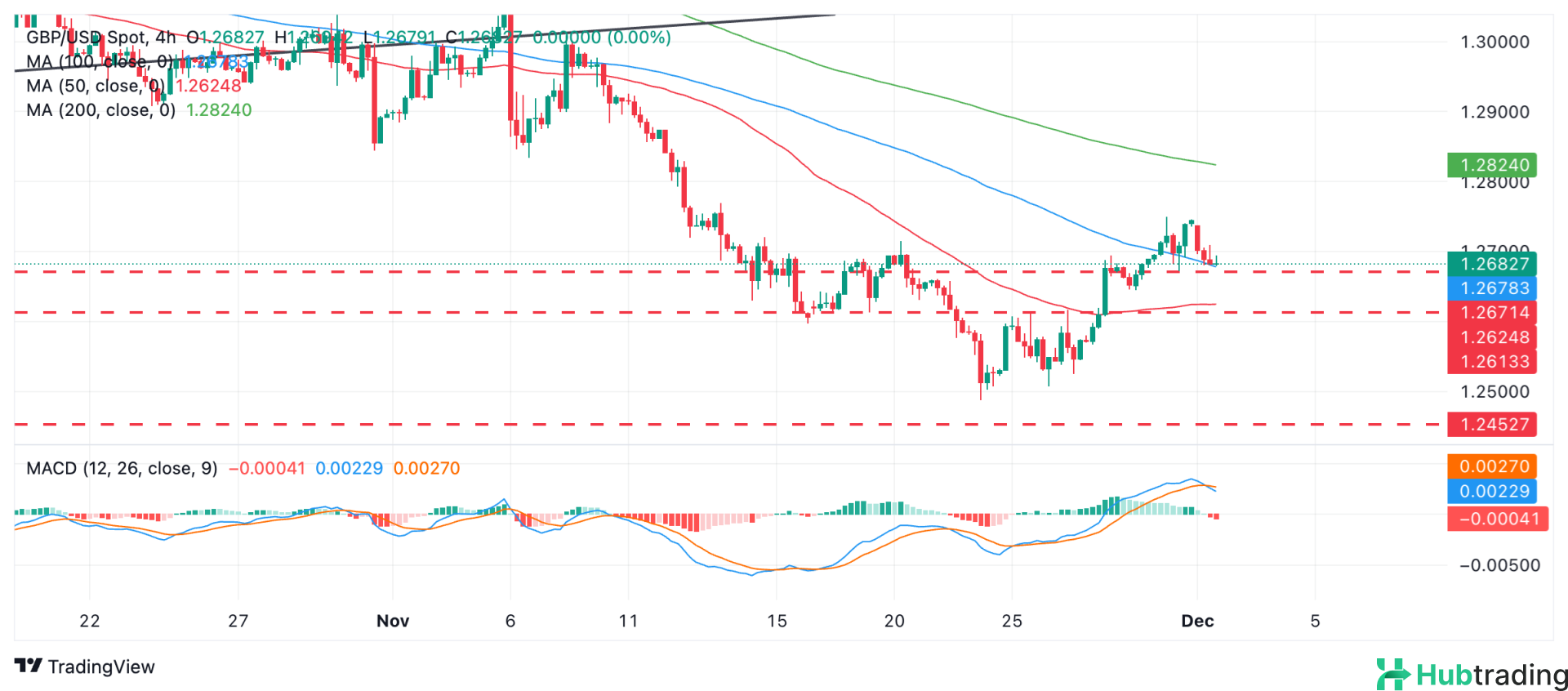- The Pound Sterling declined against the U.S. Dollar on Monday after Donald Trump threatened BRICS with 100% tariffs, boosting the Greenback.
- Trump warned that tariffs would be imposed if the group attempted to replace the U.S. Dollar with a new reserve currency.
- Despite the decline, GBP/USD remains in an overall uptrend, though currently undergoing a corrective phase.
The Pound Sterling (GBP) pulled back on Monday following renewed strength in the U.S. Dollar (USD) driven by remarks from President-elect Donald Trump. In a social media post, Trump criticized the BRICS bloc’s proposal to introduce a new currency to replace the U.S. Dollar as their primary medium of exchange. He warned that if the bloc—which includes Brazil, Russia, India, China, South Africa, Egypt, Iran, the UAE, and Ethiopia—proceeds, he would impose 100% tariffs on their exports to the U.S.
Trump stated on Truth Social: “The idea that the BRICS countries are moving away from the Dollar while we stand by is OVER. Either they abandon plans for a new currency or face 100% tariffs and say goodbye to the U.S. market.”
GBP/USD Briefly Recovers on Strong UK Housing Data
Despite early losses, GBP/USD recovered some ground after UK Nationwide housing data beat expectations. November house prices rose 3.7% YoY, exceeding the 2.4% forecast and the previous month’s growth of 2.4%. On a seasonally adjusted basis, prices increased 1.2% MoM, well above the anticipated 0.2%.
Friday’s UK Money and Lending report showed a decline in consumer credit for October, while mortgage approvals unexpectedly increased. However, Capital Economics noted that the data points to “downside risks” for Q4 GDP growth, forecasting +0.4% quarter-on-quarter.
Interest Rate Outlook: BoE and Fed Expected to Cut Rates
The Bank of England (BoE) and the U.S. Federal Reserve (Fed) are both expected to cut interest rates in December as inflation eases. The swaps market estimates a 60% probability of a 25 bps rate cut by the BoE and a 67% chance of the same by the Fed, according to CME FedWatch. This could reduce volatility for GBP/USD, as lower rates would be bearish for both currencies, diminishing foreign capital inflows.
Technical Analysis: GBP/USD in Correction, Uptrend Intact
GBP/USD remains within a short-term uptrend despite Monday’s pullback.
A break above 1.2750 could trigger further gains toward 1.2824, aligning with the 200-period Simple Moving Average (SMA).

However, continued downside pressure could push the pair to 1.2671, the mid-November low.
The MACD indicator has crossed below its signal line, signaling potential further weakness.
While the medium-term trend remains bearish, the longer-term outlook retains a bullish bias, leaving the market outlook mixed.





